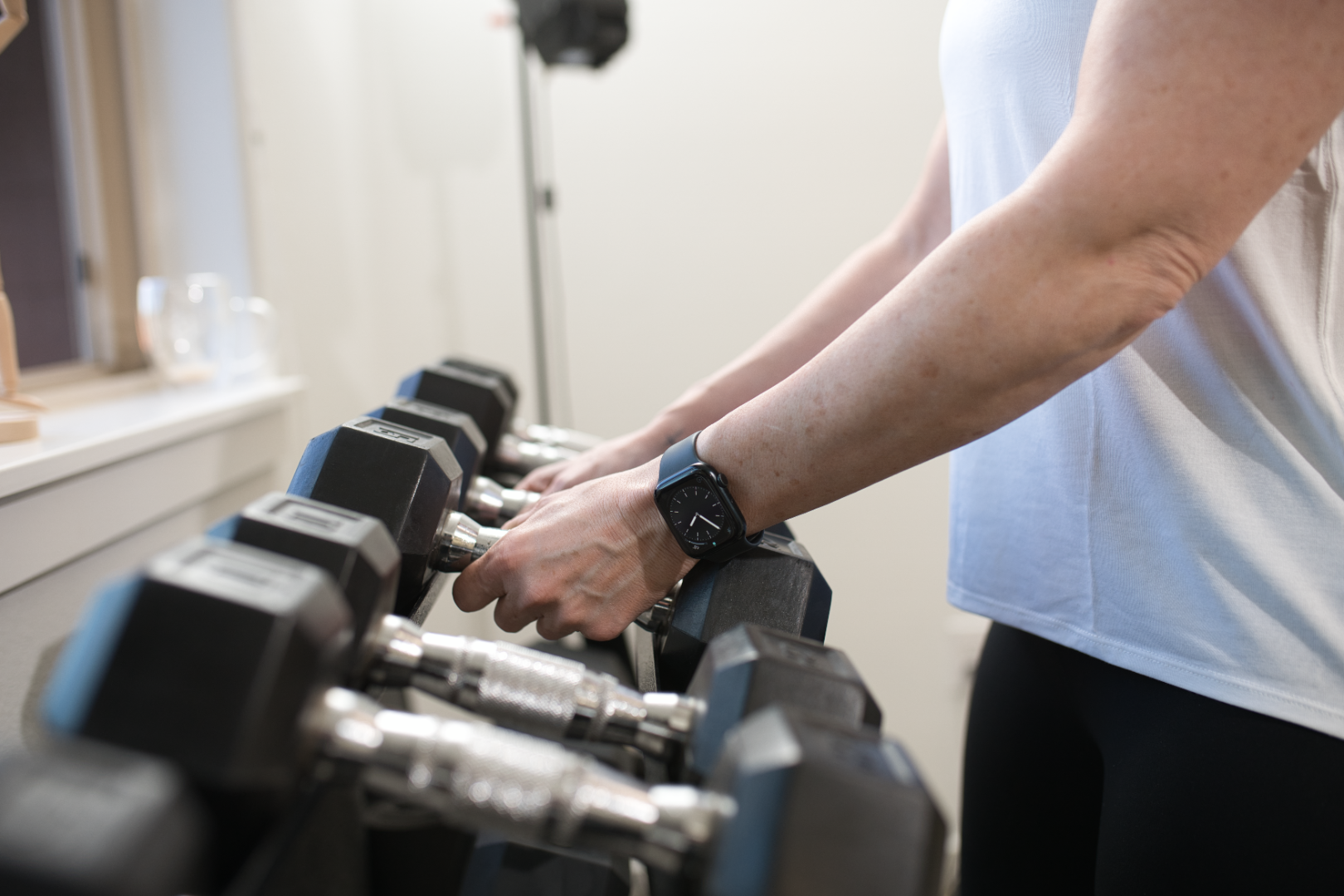Progressive Overload: The Simple Secret to Getting Stronger in Midlife

When I first started lifting weights, I thought “lifting heavy” meant grabbing the 15 pound dumbbells or maybe the 20s if I was feeling brave, then doing 15–20 reps as fast as I could until my muscles burned.
I didn’t give myself breaks because I thought resting was lazy. And honestly? I was scared that if I lifted too heavy, I’d bulk up. So I stayed in my comfort zone.
One day, I decided to test myself. I was supposed to stop at 10 reps, but instead, I kept going to see what would happen. I got all the way to 18 reps on some of the exercises. That was my lightbulb moment…I wasn’t truly challenging myself at all.
Back then, my definition of lifting heavy was “keep going until it burns.” Now I know lifting heavy means the first rep doesn’t look like the last and those final two reps feel shaky, slow, and tough. That shift changed everything for me and it can for you too.
What Is Progressive Overload (and Why It Matters for Women Over 40)
Progressive overload might sound complicated, but it’s really just the fancy term for gradually making your workouts harder over time so your body keeps adapting. Here’s why this is so important for women in midlife:
• As we enter menopause, estrogen drops, and we naturally lose muscle and bone density.
• Our metabolism slows, making it easier to gain weight and harder to lose it.
• Recovery takes longer, which means we can’t get away with training like we did in our 20s.
Progressive overload is the way we fight back. It’s how you keep your body strong, resilient, and responsive so you don’t just maintain in your 40s and 50s, you actually get stronger.
Simple Ways to Do Progressive Overload
The most obvious way is lifting heavier weights, but that’s not the only option. You can also:
• Add more reps – If you normally do 8, try 10 or 12.
• Slow it down – More time under tension makes muscles work harder.
• Increase your range of motion – Go deeper into a squat or stretch further in a lunge.
• Tighten up your form – Clean, controlled reps are harder (and way more effective) than fast, sloppy ones.
Each of these is a form of progressive overload and they all work.
Try This Progressive Overload Challenge
Here’s how you can test yourself this week:
1. Pick one day’s workout.
2. For the first set of each exercise, do as many reps as you can with good form. Write it down.
3. If you can do more than 12 reps without hitting fatigue, it’s time to go heavier.
4. Rest 60–90 seconds between sets so your muscles can recover enough to really work.
This one simple test will show you if you’re actually challenging yourself or just going through the motions.
Final Takeaway: You’re Stronger Than You Think
Progressive overload isn’t about lifting the heaviest weight in the room or trying to “beat” anyone else. It’s about nudging yourself just a little further than last time.
That’s where strength and confidence are built.
👉 Try the challenge this week, and see what you discover about yourself. And if you’d love a plan that walks you through progressive overload step by step, I’d love to have you join me inside the app.
Get started with your midlife fitness journey!
join my app and let’s do this, one workout at a time.
